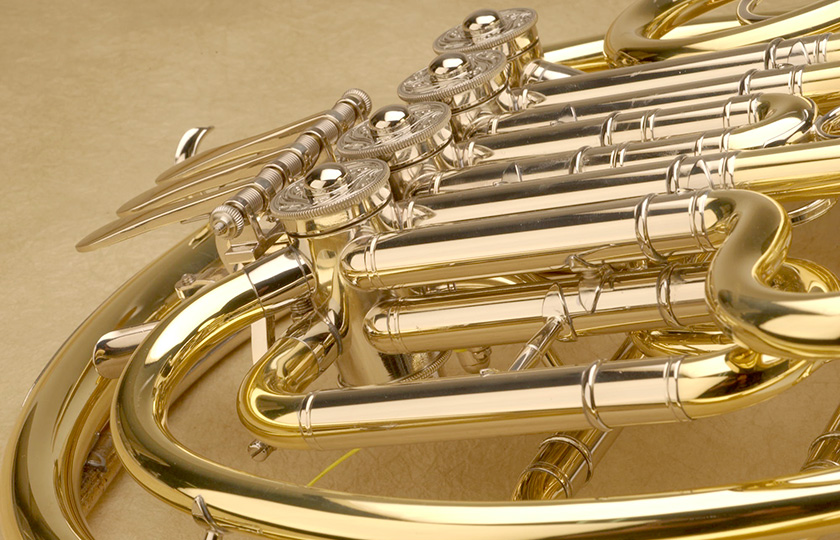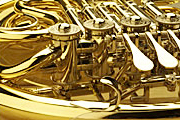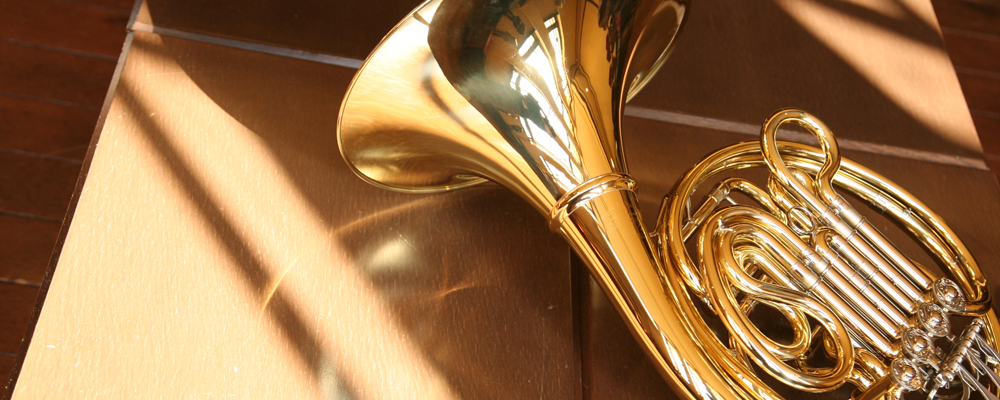How to Play the Horn
The road to good horn tone is long
Use the levers to switch between paths
How does a horn produce the notes of a scale? There are so many tubes, and the player's hand in the bell may also seem a bit strange at first.
The length of the instrument changes if one chooses to play the long F tube or the short B♭tube. With this instrument, the F tube length is 370 cm without pressing any of the levers. Pressing the first lever causes air to pass through the first branch tube, extending the overall length by 45 cm, and the second lever adds 22 cm, while the third lever adds about 74 cm. The longest possible length is 510 cm, with all the levers pressed.
Depending on the model and manufacturer, these numbers will change, but the B♭tube is generally about 275 cm long, and with all three levers depressed, this increases to 385 cm.
Knowing when to play the F tube and the B♭tube
Though it depends on the individual, the middle to high ranges are mostly played with the B♭tube, but middle C or other notes that are too low to play with the B♭tube are generally played with the F tube. The longer the tube the harder it is to get the higher notes correct, so when playing high notes, it is a safer bet to play the shorter B♭tube rather than the longer F tube.

The F slides occupy the upper tier, the B♭slides occupy the next tier, and the main slides can be found on the lower tier.
Change the tube depending on the note to be played
The horn consists of several convoluted and complex tiers of tubes, and the air flow is shown in the diagram below.
It's easy to see that the length of tube that the air passes through is indeed very long.

From the valve side as well, it is a complex looking device
As you can see, the tube has become very long.
The air flow on a double horn
Using the F tube, with no levers pressed
F tube with the first, second, and third levers pressed
B♭tube with no levers pressed
B♭ tube with the first, second, and third levers pressed
Musical Instrument Guide : Horn Contents
Origins
Structure
How to Play
How the Instrument is Made
Choosing an Instrument
Trivia
- Famous horn works
- Concertos
- Mesmerizing fifths
- What does a very long horn sound like?
- The visual effect of "bells up"
- Mozart loved a good prank
- Is that the nature of the horn?
- An instrument by day, and a drinking mug by night
- Horn players can play the Wagner tuba, despite the name
- Why are horns included in woodwind quintets?
- What do you call someone who plays a horn?
- The reason that alto horns are used in brass bands
- What is a Vienna horn?
- Garlands do not deaden sound
- What is the Knopf model?
- New instruments have just been washed

